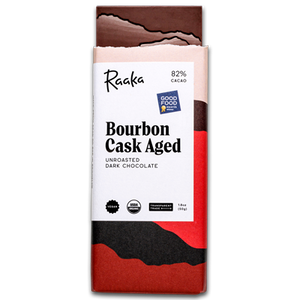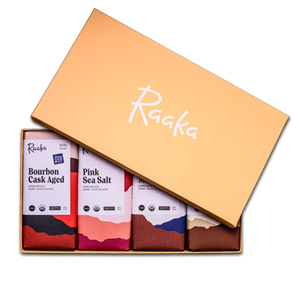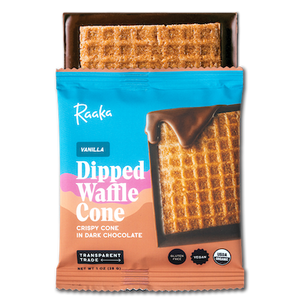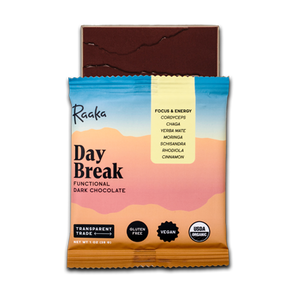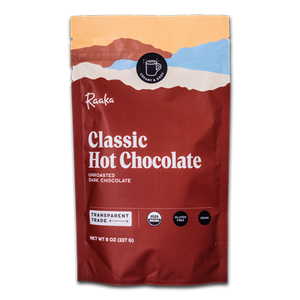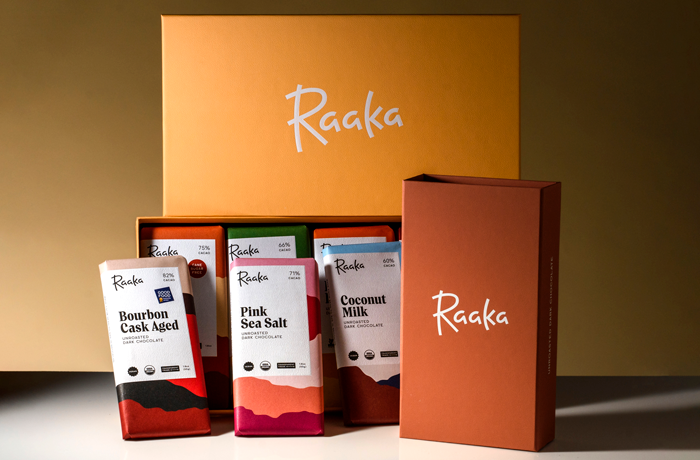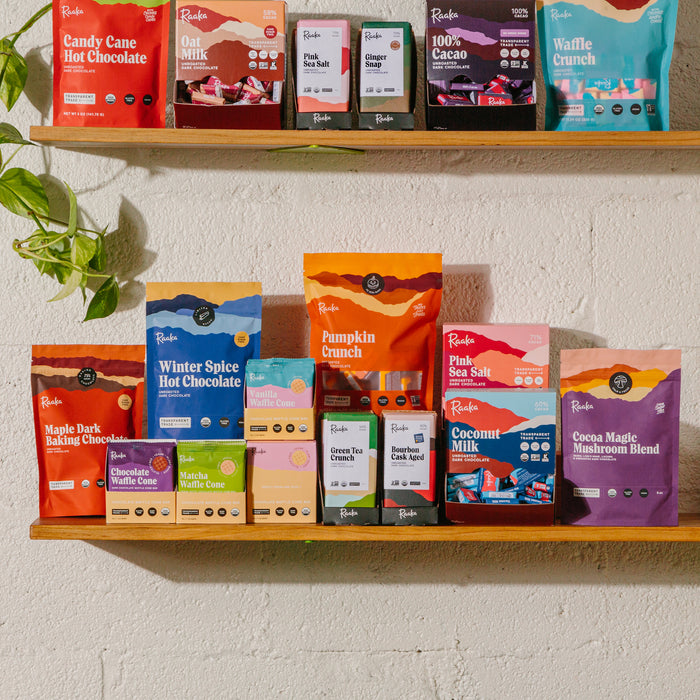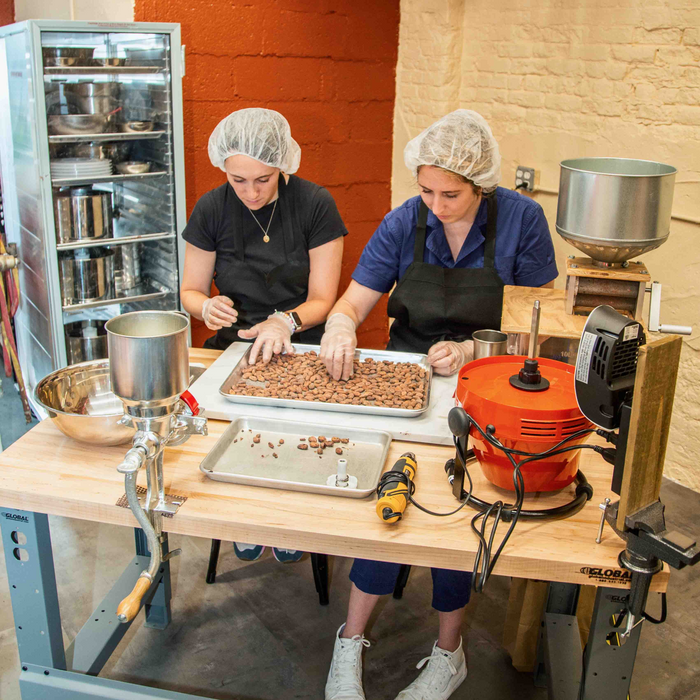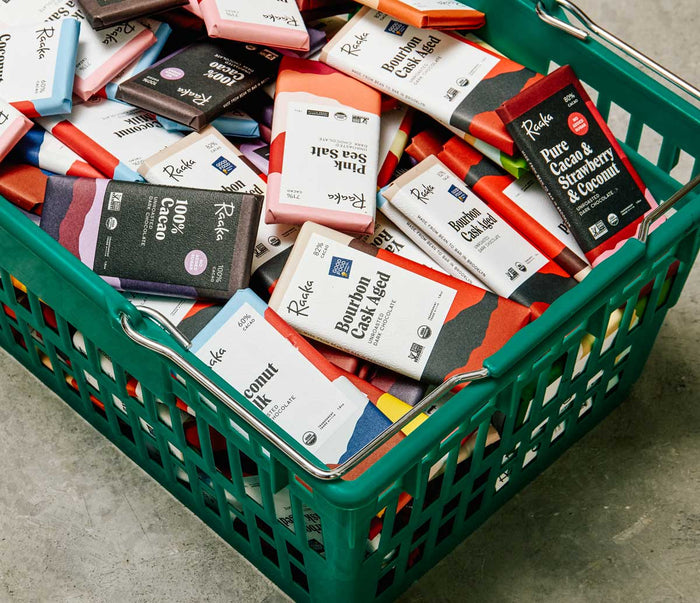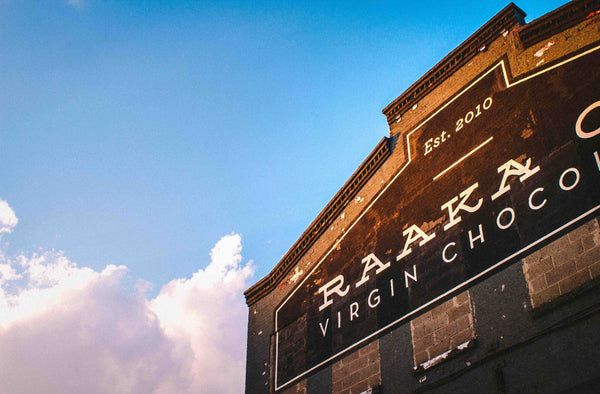Partnerships

What is unroasted?
In the Merriam-Webster dictionary, chocolate is defined as “a food prepared from ground roasted cacao beans”. This nice and concise definition had us in a minor existential crisis when we first started making “chocolate” without roasting our cacao beans. We asked ourselves, “Are we actually making chocolate?”
Needless to say, we are making chocolate, but chocolate that is uncommon in both process and in flavor. Since most chocolate available is made with roasted cacao beans, we’ve defined ours as simply “unroasted chocolate”.
We simply love the bold, bright, and fruitier flavor of unroasted cacao beans. We couldn’t find these flavors in other chocolate since most of what is available is made with roasted cacao beans, so we decided to make our own.
Nothing! We find traditionally made chocolate very delicious, and we enjoy the bars made by many of our peers -dare we say we even crave a few from time to time. We just have a very healthy obsession with unique flavors of single origin, unroasted chocolate and we feel it is our calling to make it and share it with you.
Cacao beans manifest all sorts of flavors, shaped by the soil, climate, genetics, and post-harvest processes unique to each region. We’re not just talking from country to country either: cacao beans can taste completely different within a single region depending on the unique characteristics of that area. The post-harvest process, specifically fermentation, brings out a bright and bold acidity. This is the profile we look to preserve.
To us, each cacao bean is a very special and we treat them as such. The unique flavor of our unroasted chocolate is part place, part process. Every bar we make is in celebration of each bean’s unique character.
How do you make unroasted chocolate?
It starts with a fruit.
Cacao beans are fruit seeds. Theobroma cacao is a fruit tree that bears heavy, football-shaped pods, full of lemony, sweet pulp and about forty to sixty seeds. These seeds are harvested by hand and referred to as “wet cacao” since they’re coated in the pulp. This pulp is about ninety percent water and ten percent sugar, making it the perfect food for microbes, which leads to the first step in the post-harvest process: fermentation!

Fermentation brings out the flavor.
The wet cacao is fermented in wooden boxes covered with banana leaves for four to seven days depending on the origin and the producer. While it’s the pulp that is fermented, and not the cacao seeds themselves, the seeds are subjected to the effects of fermentation like high temperatures and the creation of ethanol and acetic acids, deactivating the germ and developing flavor and aroma precursors. What this means is that tastes a whole lot better than before.
When you eat chocolate, you’re almost always eating cacao beans that have been through the fermentation process. This is why we don’t refer to our chocolate as raw: reactions during fermentation process generate heat, bringing the temperature of the pile up to around 120°F. Without this process, cacao won’t properly develop the flavors and aromas so vital to the chocolate experience. At Raaka, our focus is on the flavors of the fermentation profile.



Drying the beans.
Once fermentation is complete, the cacao beans are dried either in the sun or in solar drying tunnels for up to a week. This process reduces the moisture content of the beans to 7%, preventing them from molding. The beans are raked periodically to ensure an even dry. Once drying is complete, the beans are sorted and packed into burlap sacks, then shipped to us.

Receiving and sorting the beans.
After a very long journey across the ocean (and often, oceans), the beans arrive at our factory in Red Hook, Brooklyn. When we’re ready to work with them, we bring them into our bean room to begin our process.
Recipe development!
Every recipe we make is inspired by the unique flavors of whatever bean we’re working with. Some cacao beans are very, very fruity, like CAC Pangoa’s, so we’ll use them for our fruit-forward bars like Bananas Foster; others have hints of earthiness, like Kokoa Kamili’s, so we’ll use them for bars like Ginger Snap and Bourbon Cask Aged. Every bean has a different flavor profile, and so we craft different bars with them, often coming up with novel methods to enhance their flavors like steaming them over ginger or aging them in bourbon casks.
Sort and winnow.
Cacao beans are encased in an outer husk that must be removed and separated from the seed through a process called winnowing. Winnowing cracks the cacao and separates the husk from the "nib". We use the nib to make chocolate. Our winnower is custom built: a piece from a juicer cracks the cacao, while a vacuum sucks up the lighter husk. We donate our husks to Brooklyn Grange, Red Hook Community Farm, and Edible Schoolyard NYC, where they are used as compost. Because the husk is indigestible and not tasty, it's much better for the soil and plants than people. Trust us.
Pre-infusion
When the recipe calls for it, we pre-infuse the nibs before grinding and mixing, by either steaming or aging them. For Ginger Snap bar, we steam Tanzanian cacao nibs from Kokoa Kamili over ginger; for our Bourbon Cask Aged bar, we age them in empty, aromatic bourbon casks. In both of these processes, the fat of the bean, called “cacao butter”, absorbs the flavor.
Grind and mix
Now the fun parts begin. First, we grind the nibs in stone melangeurs, which break down the nibs, releasing and liquefying their cocoa butter and solids. The friction created generates heat, melting the cacao into a smooth chocolate emulsion. Now we add sugar, cocoa butter, and, depending on the bar, other whole food ingredients like shredded coconut for our Coconut Milk bar.


Mill the mix
After two days in the melangeurs, the chocolate is pretty smooth but not quite melt-in-your-mouth smooth, so we manually run through a very seasoned, but strapping three roll mill to create that classic silky smooth mouthfeel. Our three roll mill was built in 1939, making it far older and wiser than all of us, and in another life it refined ink in Ohio.
As its name implies, it has three rollers: the feeder roll, center roll, and the apron roll. Our chocolate makers pour chocolate between the feeder roll and the center roll, which whip up the mass into something that looks like a giant living tootsie roll. The chocolate then runs through the apron roll, where a blade scrapes it off and transfers it to the apron pan, creating a gorgeous display, alternating between a cloud and lava-like flow that’s notorious for putting onlookers into a deep trance. A chocolate maker then scrapes the chocolate into a bucket and runs it through for a second pass. The whole process takes about ninety minutes per grinder and double functions as an intense full-body workout.


Conche!
And now, we conche! What is does it mean to conche? Basically, we’re stirring and aerating the chocolate for an extended period of time to evaporate volatile oils and excess acetic acid and allow the flavors to saturate the cacao butter more completely, bringing out delicious depth in every batch. Our conche looks like a giant dunk tank sounds like the loudest laundry dryer you’ve ever heard. We conche every batch for up to eighteen very loud hours and every moment spent shouting over the noise is entirely worth it.
Temper and Pour
What would a good bar of chocolate be without a beautiful sheen and a satisfying, crisp snap? This is what tempering does. Without getting heavy into the details, tempering is the process of making the crystalline structure of the chocolate’s fat molecules stable and uniform. It takes some heating, cooling, and reheating. We have a nice machine for this, but it needs a human to operate. Once the chocolate is in temper, a chocolate maker will pour the chocolate into molds and place the molds on a rack to cool.

Demold and Wrap
At this point it’s tempting to eat all these freshly made bars, but we’d rather share them. So we demold and finally wrap our chocolate using a wrapping machine from Switzerland specifically made for the job. For the first four years of business, we hand wrapped every chocolate bar. This was quite tiring. The machine is better at it.
Share and Enjoy!
Now the chocolate is ready to ship and share. Things are going well for us when our one-man fulfillment team is lost in a sea of packages. Luckily for us, he finds his way through so you can find Raaka at a store near you. Or you can buy from us directly.

